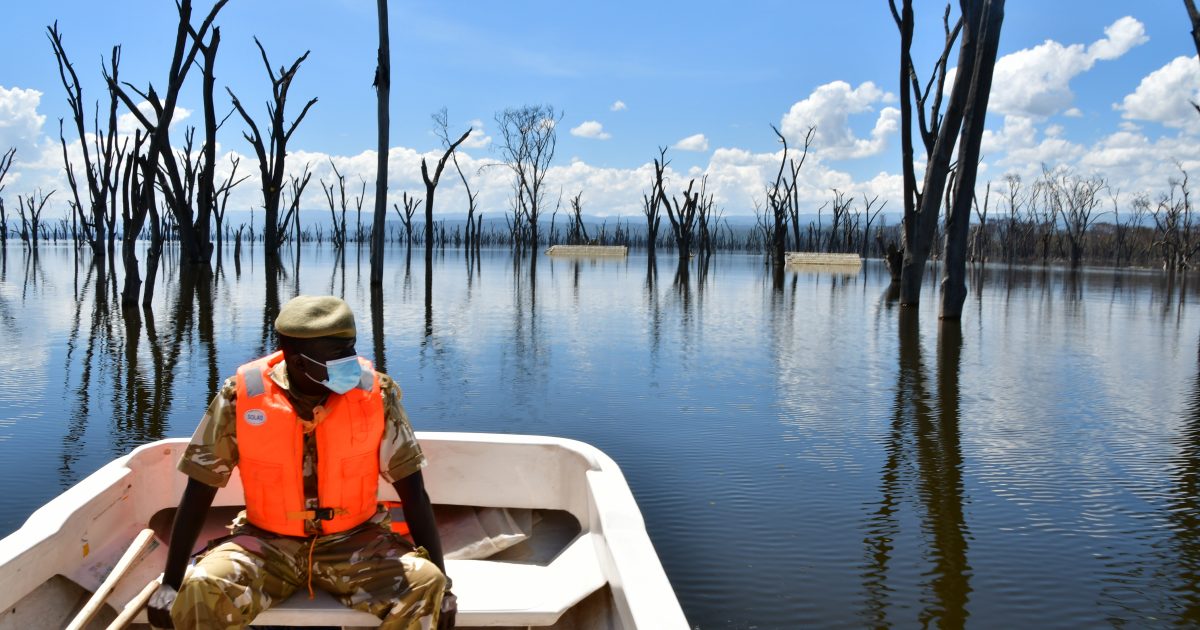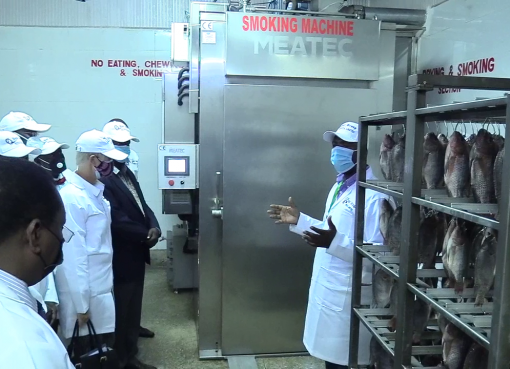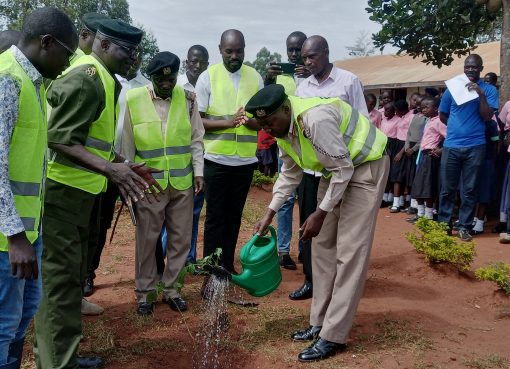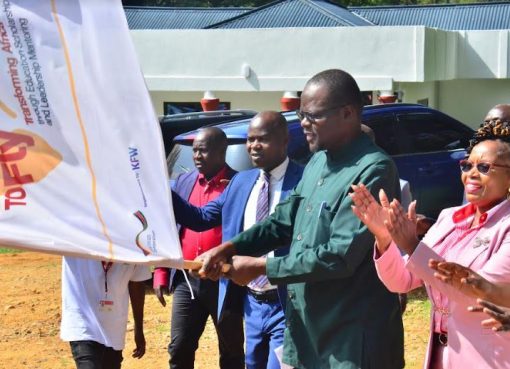World-renowned Lake Nakuru rests nestled below several hills that offer tourists a wide array of vantage points to savour the lake’s scenic beauty. Spicing up this panorama are the pink-feathered birds that over the years have been an attraction to foreign and domestic tourists.
Since the onset of the Covid-19 pandemic, however, the Lake Nakuru National Park has been starved of visitors. Close to what used to be the main gate are tiny birds hitching a hike on the back of a few zebras grazing. The ever-playful monkeys and baboons are on hand. Some gazelles might even be locking horns.
The park is home to the rhino which is endangered. Other animals found here are lions, leopards, buffaloes, giraffes, waterbucks, among others.
“Lake Nakuru National park measures 188 square kilometers,” the park’s Senior Warden Collins Ochieng’, says, aboard a motor boat quietly afloat the calm waters of the lake. He continues regarding the park, “It has three official gates but one has been consumed by water.”
The rising lakes phenomenon hasn’t spared Lake Nakuru. The main gate and other buildings at certain sites are on the verge of being completely submerged. The park’s management has been compelled to relocate the main entrance to the park to higher grounds.
The boat begins drifting smoothly toward the submerged main gate. The dominant trees here are of the acacia family. Around the shores of the lake and deep into it, are innumerable trees that have crushed into the water. It looks like their roots got so swamped with water that the soils around them turned into jelly and therefore couldn’t support the trees’ weight. A few of these trees have scanty leaves.
The boat’s engine is ignited. The coxswain gently weaves his way round trees fallen in water. Some of the acacia trees’ massive roots are exposed having been flipped up as the trees crushed. A number of these trees had to be sawed to pave way for boat maneuvers.
The roof of the official gate is touching water. It was once on a dry patch of land. This is the first time that KWS has had to relocate the main gate. There are two other gates which are still accessible; Lanet and Nderit. “We want to put up a gate on the North-Eastern side of the park,” Ochieng’ says.
Ochieng’ explains that the increased water levels began around 2013 or 2014. “But we noticed that as from March this year the rate of rise has been very fast,” he says. “We’ve measured up to four metres in the increase of water levels in the park.”
The park’s infrastructure; roads, fences and buildings have been destroyed. “All these are very expensive to undertake,” Ochieng’ says.
Pointing to a structure, Ochieng’ says,” That was the staff canteen and behind it was the Warden’s house.” They are almost entirely submerged. Electric poles are standing in water.
“We’ve never experienced this before,” Ochieng’ says. “In the reverse, we’ve experienced the lake shrinking such that it became less than 20 square kilometers.”
“In 2014 the lake was 35 square kilometres,” Ochieng’ says. “It is now 80. It has more than doubled.” He’s concerned that the lake has spilled into community lands, causing some human-wildlife conflict.
“A hippopotamus and a snake do not know the boundaries of the park. These animals trespass into community areas,” the Senior Warden says.
Ochieng’ has kept abreast with the various theories that have sprung up from many professionals around the world to account for this phenomenon. Siltation, increased rainfall and the movement of tectonic plates in the earth’s crust are just a few of them.
As the boat powers its way towards one of the farthest points opposite the main gate, a rare sight clearly comes into view. Countless grayish trees stripped of their foliage, present a somewhat somber mood. They appear scotched and look forlorn as they stand in water. However, reflection of the blue sky and the white clouds in the water inject some spark to the beauty of the lake.
Picturesque hills in the far distance on either side of the boat look as if they are shielding the blue waters from draining away.
Five seasonal rivers empty their contents into the lake. These are Njoro, Makalia, Nderit, Naishi and Larmudiak. Within the park, these rivers have been reduced to paddles of muddy water, with trees collapsed in them.
Different birds are chirping around providing a welcome ambience to nature lovers. Some are flying just a few feet above the surface of the water. Others, dominantly with their black and white plumage, are flapping their wings, acrobatically balancing themselves on leafless branches propping up a few inches above the alkaline water.
“We have over 450 bird species,” Ochieng’ says. “The most popular are the pelicans, the flamingoes, the fish eagle and the kingfisher.”
No flamingoes have been spotted yet. “We have them but on the southern end of the park,” Ochieng’ says.
Approaching the fence line, an estate called Baruti comes into view. The houses here were vacated after the area was inundated with water. “We have 151 houses affected by water in this area alone,” Ochieng’ says. The two-kilometer fence line is also affected. “This is where you find the hippopotamuses, the snakes and the fish getting out into community land.”
The Park Warden says there’s a standby team of rangers here. They prevent the hippos from getting out before they get very close to that residential area.
Boys will always be boys. The lake’s spillage out of its former boundary into Baruti constitutes formation of a swimming pool! It’s also a fishing pond. Ochieng’ says there are four types of fish. These include the tilapia niloticus.
The water is still rising. The Kenya Wildlife Service (KWS) is determined not to allow this occurrence, coupled with the Covid-19 pandemic to cripple operations at the park. “We’ve decided to introduce other products that are suitable with water,” Ochieng’ says. “In the next few weeks, we should be seeing Lake Nakuru rolling out new products that will see visitors attracted back.”
At the moment, circuiting the park from within as the norm has been is impossible. Most sections of the internal road network have been flooded.
Alternative routes have to be sought to access the three view-points. Lion Hill, Baboon Cliff and Out of Africa are adequately elevated to offer visitors memorable landscape with the lake sitting in the trough below. The yellow acacia woodlands on the peripheries of the lake crave for attention. The view-points also serve as picnic sites.
At the moment, the Lion Hill view-point can only be approached from the Lanet Gate near Pipeline area. This means visitors have to get out of the park and drive on the outskirts of Nakuru town.
The Bus shuttle that was ferrying locals from Nakuru town to the park was suspended due to the spread of covid-19. “We are going to resume these services immediately we get clearance from the Ministry of Health, and as usual it will be over the weekends and public holidays,” Ochieng’ says.
The fee to the park for East African residents—Kenyans, Ugandans, Tanzanians, Burundians and Rwandese is sh. 800 for adults and sh. 200 for children while non-residents are charged $30 per adult.
Lakes Naivasha, Elementaita, Kamnarok at the base of the Kerio valley, Baringo, Bogoria and 94 among others, have also experienced voluminous rises in water.
Johana Kariuki was born and brought up on the shores of Lake Elementaita. “This is the first time I’ve seen this,” he says. “This lake was almost disappearing. People used to walk across it and vehicles would even drive through sections of it.”
Before March this year, there was a clear demarcation between the lake and the acacia woodlands dotting the sides of the lake. Water has spread into the trees. Bird lovers will not be disappointed though, especially if they have binoculars or powerful lenses.
The official gate at Bogoria Park is also submerged. The hot water springs have been smothered out of sight. The thousands of flamingoes that one would expect to see at Lake Nakuru are clearly hovering in attractive formations above the lake.
The Marigat to Loruk Road has been diverted just before Loruk due to Lake Baringo’s expanded shores across the road, submerging a number of buildings.
At other locations of Lake Baringo, crocodiles are swimming very closely to land. Women are engrossed in scraping scales from fish and slitting them to remove their intestines. For these women, the rise in the lake’s water levels portends a good catch.
By William Inganga





